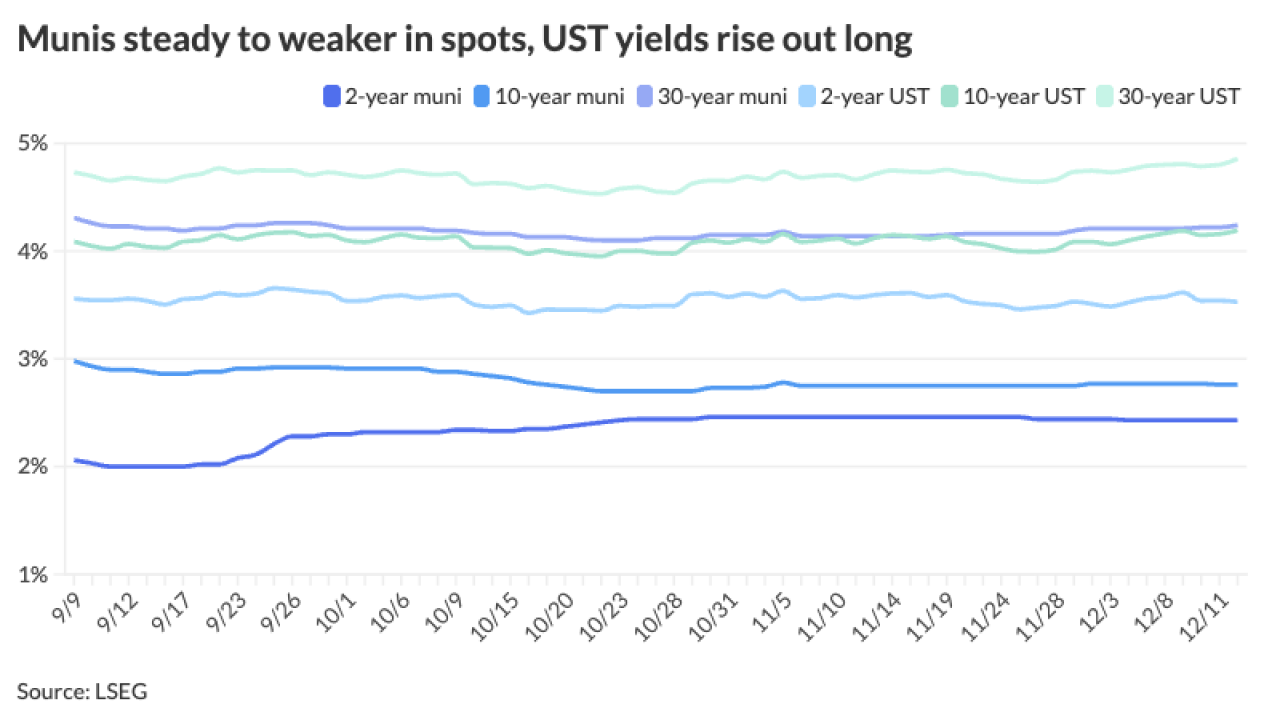After initial skepticism, equity market participants have for years harnessed volume-weighted average price (VWAP) to evaluate execution quality. This key metric is enabled by the transparency of the equity markets where both pre- and post-trade data are readily available for every stock and where algorithms are impacted by changes to that data in a matter of milliseconds. As the equity market has grown comfortable with the consistent calculation method of VWAP, the focus of execution analysis has shifted from which is the appropriate benchmark toward how best to use and interpret the benchmark comparisons.

Seeing as the fixed income markets are less transparent and less liquid with data that is incomplete, the prevailing market price (PMP) waterfall methodology has the potential to deal with the “data desert” that participants face when seeking relevant market observations to power advanced execution analytics. Although it is not the single metric that VWAP is for the equity markets, the waterfall approach provides the ability to develop a precise, quantitative and consistent benchmark data set to which every fixed income transaction can be compared, further driving enhanced insights and supporting critical regulatory requirements.
Reintroduction to PMP
While it is widely believed that the introduction of the PMP waterfall methodology was a recent retail-focused initiative to support markup disclosure, the reality is that, as a concept, PMP has existed for many years. PMP was initially introduced by the Financial Industry Regulatory Authority where it was applied to the corporate market and later extended to the municipal market. As part of the markup disclosure regulation that went into effect in 2018, the Municipal Securities Rulemaking Board made a concerted effort to align their definition of the PMP waterfall methodology with FINRA’s, thus creating a standard methodology across both taxable and tax-free securities. In addition, both FINRA Rule 2121 and MSRB Rule G-30 were rewritten to describe the determination of PMP as a critical component in assessing fair pricing for all customer trades — both retail and institutional.
In the context of markup monitoring, markup disclosure and fair pricing, the precise PMP value is the most critical metric, whereas best execution processes can be enhanced by leveraging the totality of the data and identifying variances across all market observations. In all scenarios, the ability to 1) marry every execution with a consistent benchmark data set, 2) identify and address exceptions, 3) document other market conditions, and 4) support regulatory inquiries provides fixed income market participants with an opportunity to streamline and enhance critical compliance processes.
Rationale for the PMP waterfall methodology
The PMP waterfall methodology walks a professional market participant through a logical process that attempts to replicate what a bond market professional would do in attempting to ascertain the prevailing market price of a bond. By codifying the steps to create a consistent approach across all trades, we can automate the process, story the data and analyze it at different levels of aggregation to identify trends, outliers and opportunities for improved outcomes. The PMP value is determined by the following process:
· Level One: Have I traded this bond today? If so, at what price did I trade the bond?
· Level Two: If I have not traded this bond today, are there any market observations of trading in this bond today in the following order, starting with the dealer-to-dealer market (considered the inside market)? If not, are there any dealer-to-institutional customer (considered knowledgeable investors) trades? If not, then are there any quotations in the market on my bond?
· Level Three: Should no observations exist for my bond; can I identify comparable bonds and determine a value for my bond by using a yield to price the calculation of the comparable bond? This calculation can be done by looking at dealer-to-dealer, dealer-to-institutional customer or quotations (in no defined order).
· Level Four: Barring any observations in my bond and a lack of comparable bonds, I can determine a PMP using an economic model.
Regulation driving innovation
The introduction of the PMP waterfall has provided the fixed income markets with a unique opportunity to augment current markup monitoring, markup disclosure, fair pricing and best execution processes with a single, quantitative and consistent benchmark data set. If adoption of a single benchmark for analyzing fixed income executions follows a similar path to the equity market’s adoption of VWAP as a key tool in execution analysis then, after an initial period of resistance and finding fault, effort will turn to how to improve the metric to drive real insights.
In the early days of using an average price for equity execution analysis, the common refrain among traders was “Why would I settle for average?” With time and improved understanding of the market’s microstructure, traders are now thinking of ways to improve the metric by normalizing for bid/ask spreads, by using interval VWAPs, or comparing to VWAPs before and after trading windows. We should view PMP in a similar fashion. First, we can agree on a common metric. Then, we can work on ways to improve the analytical capabilities of the metric.
The convergence of technology, investors’ needs and regulatory efforts will further highlight the importance and fuel the value of fixed income data. Through relentless innovation in data analysis and automation, market participants can advance their capabilities and drive deeper, more meaningful insights across the fixed income landscape.





